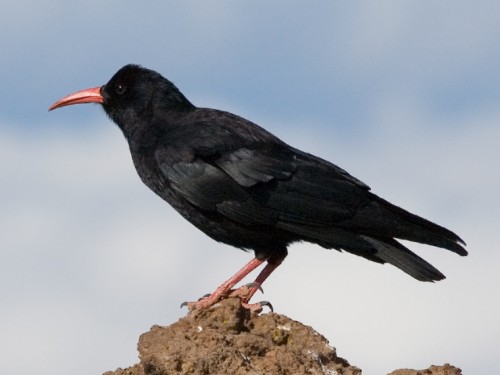Hornbill
According to fossil records, the birds called hornbills have been on this earth for some 15 million years. They have very powerful bills and one species of hornbills called great pied hornbills have beaks as long as thirteen inches.
They use these powerful beaks to catch insects and make their way through the dense branches in the rain forests of Southeast Asia, the Soloman islands and Africa.
Some hornbills are the size of turkeys, while the smallest of the hornbills is the African dwarf red billed hornbill which is the size of a dove.

Hornbill
They can live as long as 45 years. They choose their mate for life. Both birds search for and choose a suitable place for a nest which could be seventy feet High in a tree.
They find a place where there is an opening into the tree where the female can wall herself inside by making a plaster-like material from mud and chewed bark. She leaves a small opening through which her dutiful mate will bring her a variety of foods.
She lays one or more eggs and tends them well for a few months — both incubation time and when they are young. Then, she pecks her way out of the nest and the fledglings again wall themselves up leaving a small opening where both Mom and Dad bird can bring them food.
They decide when they want to peck their way out of the nest in the tree and go out to explore the world of the forest.
Hornbills often forage on the ground, walking in groups, young birds and old bird’s searching for insects, mice, snakes, lizards and scorpions. In the trees they find fruit and figs to eat.
Some species of hornbills are bold and would come right up and look at you. Others stay in the privacy of the forest and try to keep from being seen.

Hornbill
People who study the hornbills often become very intrigued with them and very protective of them when they realize the problems they face to survive.
The logging in forests is diminishing their area. Poachers are a problem — taking chicks to sell for high prices and also killing adult birds for their magnificent bills and brilliantly coloured feathers. Some unfortunate birds fall prey to poison
That farmers set out.
There are some National Parks and Sanctuaries for them and they have some devoted friends who are working tirelessly to keep them from becoming extinct. These colourful, dignified birds are incredibly beautiful and unique.
They are a part of the wondrous rain forest regions and deserve to be cared about and well protected.
Find out more about the Hornbill over at Wikipedia »



need help finding the size of a hornbill